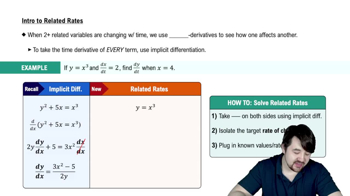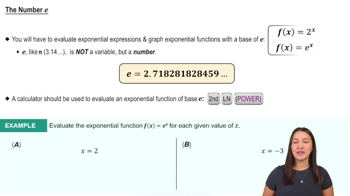Find an equation of the line tangent to the following curves at the given value of x.
y = 4 sin x cos x; x = π/3
 Verified step by step guidance
Verified step by step guidance Verified video answer for a similar problem:
Verified video answer for a similar problem:



 5:13m
5:13mMaster Slopes of Tangent Lines with a bite sized video explanation from Patrick
Start learning